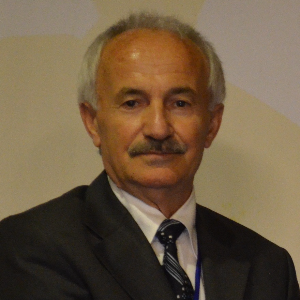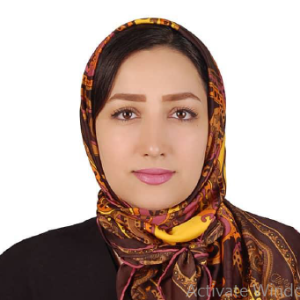Dai Yeun Jeong, Asia Climate Change Education Center, Korea, Republic of
The United Nations has begun to establish the strategies responding to climate change at a global level as a guideline for climate change policies to be launched by each country. This is because climate change is placed at the top among environmental problems in that its impact o [....] » Read More
















![Fixed bed adsorption of Arsenate [As(V)] and Arsenite [As(III)] from groundwater using artocarpus hirsutus based adsorbent Dhanasekaran P, Speaker at Catalysis Conference](https://catalysiscongress.com/uploads/speakers/dhanasekaran-p-2681.jpg)













Title : Application of metal Single-Site zeolite catalysts in catalysis
Stanislaw Dzwigaj, Sorbonne-Universite-CNRS, France
The metal ions well dispersed at the zeolite framework are considered to be active sites of catalytic processes. Therefore, the incorporation of these metals into zeolites as isolated tetrahedral sites appears to be the important task. We have earlier shown that the incorporation [....] » Read More
Title : Engineering stable, expressible, functional industrial enzymes with protein sequence likelihood models
Shawn Reeves, University Of Waterloo, Canada
Protein sequence likelihood models are a rapidly emerging class of deep learning algorithms which learn the likelihood of each potential amino acid to occur in a given structural, evolutionary, or sequence context. Recently, these models have demonstrated impressive performance i [....] » Read More
Title : FCC/2H and FCC/4H copper nanodisks for carbon dioxide reduction
Shutang Chen, Honda Research Institute USA Inc, United States
The nanosized fcc/hcp (face centered cubic/hexagonal close-packed) noble metal heterostructures have demonstrated excellent catalytic performance towards hydrogen evolution reaction and CO2 reduction reaction. Among all the monometallic catalysts, copper has drawn great [....] » Read More
Title : Tailoring cu-hydroxyapatite catalysts for hydrogenation of levulinic acid to ?-valerolactone: Impact of copper loading, reaction temperature, and catalyst durability
Ahmed Bahgat Radwan, Qatar University, Qatar
Synthesis of γ-valerolactone (GVL) from levulinic acid (LA) holds significant importance as a sustainable route for the conversion of biomass-derived feedstocks into valuable chemicals. In this study, Cu-Hydroxyapatite (Cu-HAp) catalysts were investigated for the [....] » Read More
Title : Enhancing energy efficiency in buildings through functional nano-coatings for window glazing: A study on the thermal behavior of glass in saudi arabia
Ahmed Almogbel, King Abdulaziz City of Science and Technology, Saudi Arabia
Understanding and predicting the thermal behaviors of a building's interior requires knowledge of the amount of heat flow. Improving the performance of a building's window system is necessary for achieving greater energy efficiency. Glazing materials in windows allow visi [....] » Read More
Title : Tunable anchoring of metal nanoparticles on hard carbon supports for kinetically superior and selective hydrogenation of olefins
Gitika Rani Saha, IITB-Monash Research Academy, India
The multiphasic nature of the catalysts, reactants and products continues to be a major obstacle in realizing enhanced kinetics without compromising on the selectivity and durability of heterogeneous chemical catalysts. Conventional understanding has focused on improvin [....] » Read More
Title : The effect of co-feeding H2 and CO2 on ethylene oligomerization to produce fuel-range hydrocarbons
Omar Abed, King Abdullah University of Science and Technology (KAUST), Saudi Arabia
The climate change crisis has triggered various efforts to mitigate greenhouse gas emissions and reduce carbon footprints. One of the most promising approaches is to capture carbon dioxide and transform it into higher-value chemicals. Ethylene, a major building block in the chemi [....] » Read More
Title : Prediction of permeable reactive barrier width for arsenic treatment in groundwater using machine learning techniques
Guo Fengshi, Korea University, Korea, Republic of
Permeable reactive barrier (PRB) is an effective in-situ technology for aquifer and groundwater remediation [1]. The important factors in PRB design are the width and selection of the reactive material [2]. In this study, the beaded coal mine drainage sludge (BCMDS)&nbs [....] » Read More
Title : Prediction of micro pollutants degradation kinetic constants by ultrasonic using XGBoost and SHAP models and verification through experiments
Sun Shiyu, Korea University, Korea, Republic of
In recent years, the emissions of micro-pollutants have been continuously increasing, leading to the sustained significance of degrading micro-pollutants in aquatic systems. Among various degradation methods for micro-pollutants, the approach of ultrasonic degradation in aquati [....] » Read More
Title : Synthesis, charaterization and application of nano sized barium chromate for photocatalytic degradation of an organic pollutants
Dineshkumar Ishwarlal Prajapati, M. G. Science Institute, India
In the present investigation, nano-sized barium chromate has been used as a photocatalyst for the degradation of an organic pollutant. The semiconductor was prepared by precipitation method and it was characterized by different analytical techniques like XRD, SEM-EDS and FT-IR. B [....] » Read More
Title : The solventfree mechano-chemical grinding ofa bifunctional P25–graphene oxide adsorbentphotocatalyst and its configuration as porousbeads
Malika Tamimi, University Ibn Zohr, Morocco
Titanium-dioxide based nanomaterials have been widely used in water-cleaning technology, with Degussa (P25) being the most promising photocatalyst under UV light. However, its effectiveness under visible light requires the combination of titanium dioxide with other photosensitizi [....] » Read More
Title : Using artificial intelligence to predict the performance of Al2O3 supported Mixed-Metal catalysts for the oxidative dehydrogenation of n-Butane
Ridhwan Lawal, King Fahad University of Petroleum and Minerals, Saudi Arabia
The development of efficient and selective catalysts for the oxidative dehydrogenation of n-Butane to produce alkenes with higher value has been a subject of intense research in recent years. In this project, we present a novel approach for predicting the performance of mixed met [....] » Read More
Title : Evidence for formation of iron oxide nanoparticles into the mechanistic of the Thermal DecomposiAmmoniump perchlorate using ferrocenyl compounds derived from 1,2,3-triazolyl ligand as burning rate catalysts
Cesar Morales Verdejo, Bernardo O'Higgins University, Chile
Rocket technology research is currently receiving the utmost attention due to its potential applications, mainly in the aerospace equipment industry. In this way, for the first time in human history, a commercially built spacecraft by Space-X operated by a crew of NASA astronauts [....] » Read More
Title : Enhanced photodecomposition of ammonia using ruthenium oxide-loaded 2d hematene
Hossein Hejazi, Czech Advanced Technology and Research Institute, Czech Republic
Two-dimensional (2D) non-van der Waals (n-vdW) materials, similar to graphene counterparts, offer exceptional properties and versatile uses. Among these, 2D iron oxides stand out for their magnetic, photocatalytic, and electrocatalytic potential. Here, we present the effective lo [....] » Read More